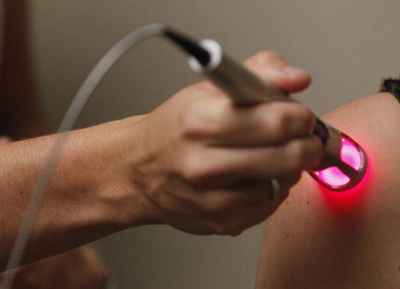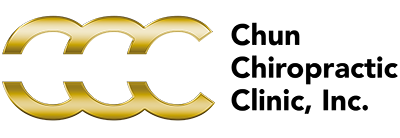The Nuts and Bolts of Low-level Laser (Light) Therapy

This article is taken from PubMed.gov
Hoon Chung, Tianhong Dai, Sulbha K. Sharma, Ying-Ying Huang, James D. Carroll, and Michael R. Hamblin
Cold laser or low level laser therapy came into being in 1960's. In 1967, Endre Mester, noticed that applying laser light to the backs of shaven mice could induce the shaved hair to grow back more quickly than in unshaved mice. He also demonstrated that laser could stimulate wound healing in mice. Mester soon applied his findings to human patients, using lasers to treat patients with nonhealing skin ulcers. Cold laser has now developed into a therapeutic procedure that is used in three main ways: to reduce inflammation, edema, and chronic joint disorders; to promote healing of wounds, deeper tissues, and nerves; and to treat neurological disorders and pain.
Cold laser involves exposing cells or tissue to low levels of red and near infrared (NIR) light, and is referred to as “low level” because the energy used does not cause enough heat to cut or damage body tissues.
CELLULAR AND TISSULAR MECHANISMS OF LLLT
The biochemical mechanism underlying the therapeutic effects for cold laser are known as photobiomodulation.
When a photon of light is absorbed by a chromophore in the treated cells, an electron in the chromophore can become excited and jump from a low-energy orbit to a higher-energy orbit. This stored energy can then be used by the system to perform various cellular tasks. There are several pieces of evidence that point to a chromophore within mitochondria being the initial target of LLLT. Radiation of tissue with light causes an increase in mitochondrial products such as ATP, NADH, protein, and RNA, as well as a reciprocal augmentation in oxygen consumption, and various in vitro experiments have confirmed that cellular respiration is upregulated when mitochondria are exposed to an HeNe laser or other forms of illumination.
LLLT results in increased ATP production and electron transport.
Cold laser has been shown to cause vasodilation by triggering the relaxation of smooth muscle associated with endothelium, which is highly relevant to the treatment of joint inflammation. This vasodilation increases the availability of oxygen to treated cells, and also allows for greater traffic of immune cells into tissue. These two effects contribute to accelerated healing. NO is a potent vasodilator via its effect on cyclic guanine monophosphate production, and it has been hypothesized that LLLT may cause photodissociation of NO, not only from CCO, but from intracellular stores such as nitrosylated forms of both hemoglobin and myoglobin, leading to vasodilation.
SURVEY OF CONDITIONS TREATED WITH LLLT
LLLT is used for three main purposes: to promote wound healing, tissue repair, and the prevention of tissue death; to relieve inflammation and edema because of injuries or chronic diseases; and as an analgesic and a treatment for other neurological problems. These applications appear in a wide range of clinical settings, ranging from dentistry, to dermatology, to rheumatology and physiotherapy. Wound healing was one of the first applications of LLLT, when HeNe lasers were used by Mester et al. to treat skin ulcers. LLLT is believed to affect all three phases of wound healing: the inflammatory phase, in which immune cells migrate to the wound, the proliferative phase, which results in increased production of fibroblasts and macrophages, and the remodeling phase, in which collagen deposition occurs at the wound site and the extra-cellular matrix is rebuilt.
LLLT is believed to promote wound healing by inducing the local release of cytokines, chemokines, and other biological response modifiers that reduce the time required for wound closure, and increase the mean breaking strength of the wound. Proponents of LLLT speculate that this result is achieved by increasing the production and activity of fibroblasts and macrophages, improving the mobility of leukocytes, promoting collagen formation, and inducing neovascularization.
CONCLUSION AND OUTLOOK
Advances in design and manufacturing of LLLT devices in the years to come will continue to widen the acceptability and increase adoption of the therapy among the medical profession, physical therapists and the general public. While the body of evidence for LLLT and its mechanisms is still weighted in favor of lasers and directly comparative studies are scarce, ongoing work using non-laser irradiation sources is encouraging and provides support for growth in the manufacture and marketing of affordable home-use LED devices. The almost complete lack of reports of side effects or adverse events associated with LLLT gives security for issues of safety that will be required.
We believe that LLLT will steadily progress to be better accepted by both the medical profession and the general public at large. The number of published negative reports will continue to decline as the optimum LLLT parameters become better understood, and as reviewers and editors of journals become aware of LLLT as a scientifically based therapy. On the clinical side, the public’s distrust of big pharmaceutical companies and their products is also likely to continue to grow. This may be a powerful force for adoption of therapies that once were considered as “alternative and complementary,” but now are becoming more scientifically accepted. LLLT is not the only example of this type of therapy, but needle acupuncture, transcranial magnetic stimulation and microcurrent therapy also fall into this class. The day may not be far off when most homes will have a light source (most likely a LED device) to be used for aches, pains, cuts, bruises, joints, and which can also be applied to the hair and even transcranially to the brain.
